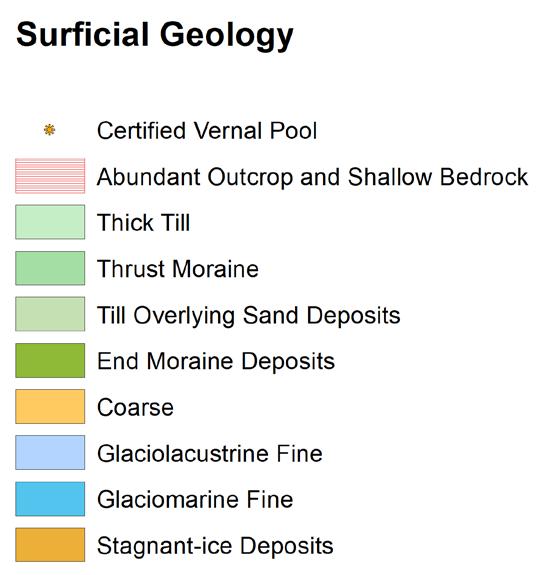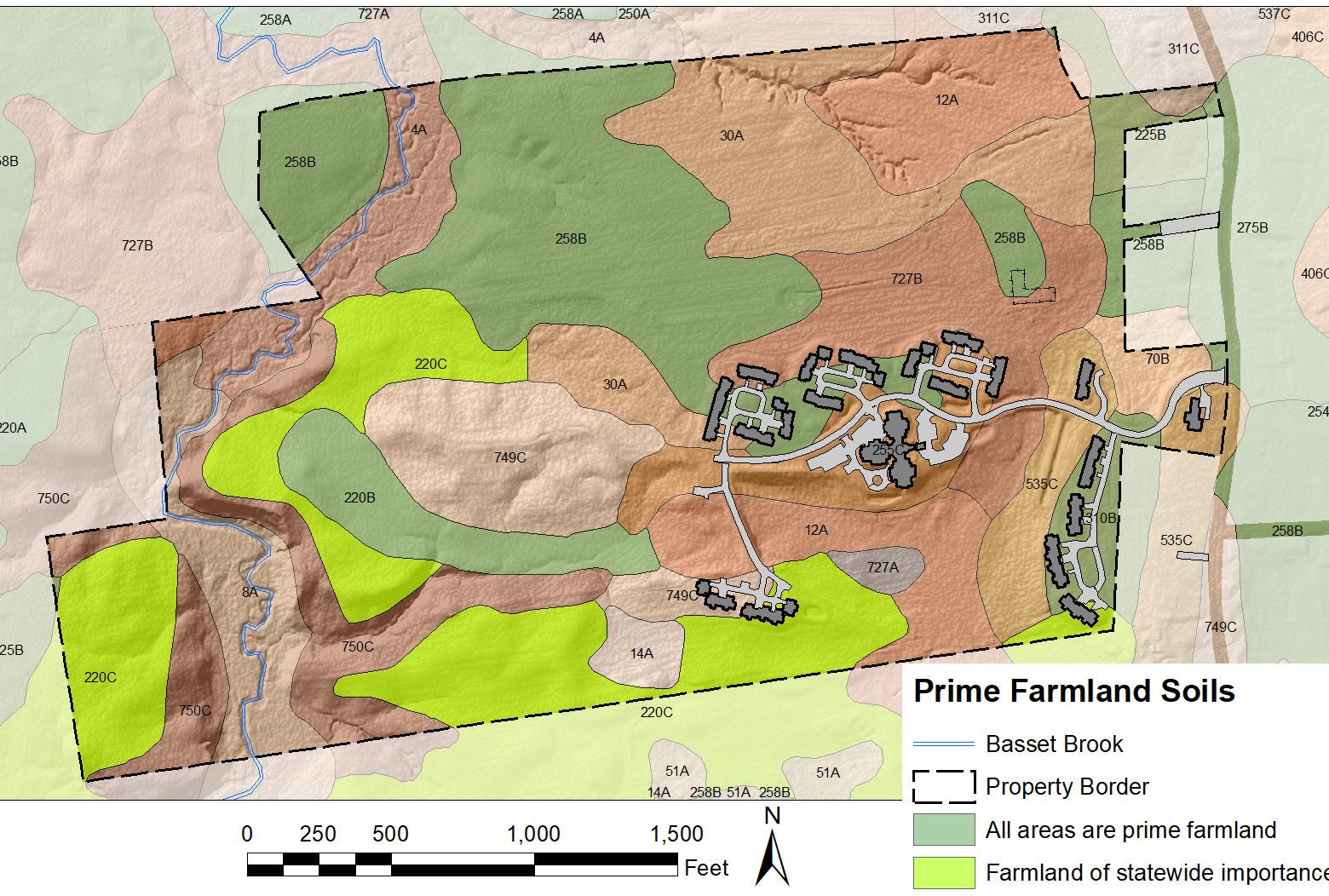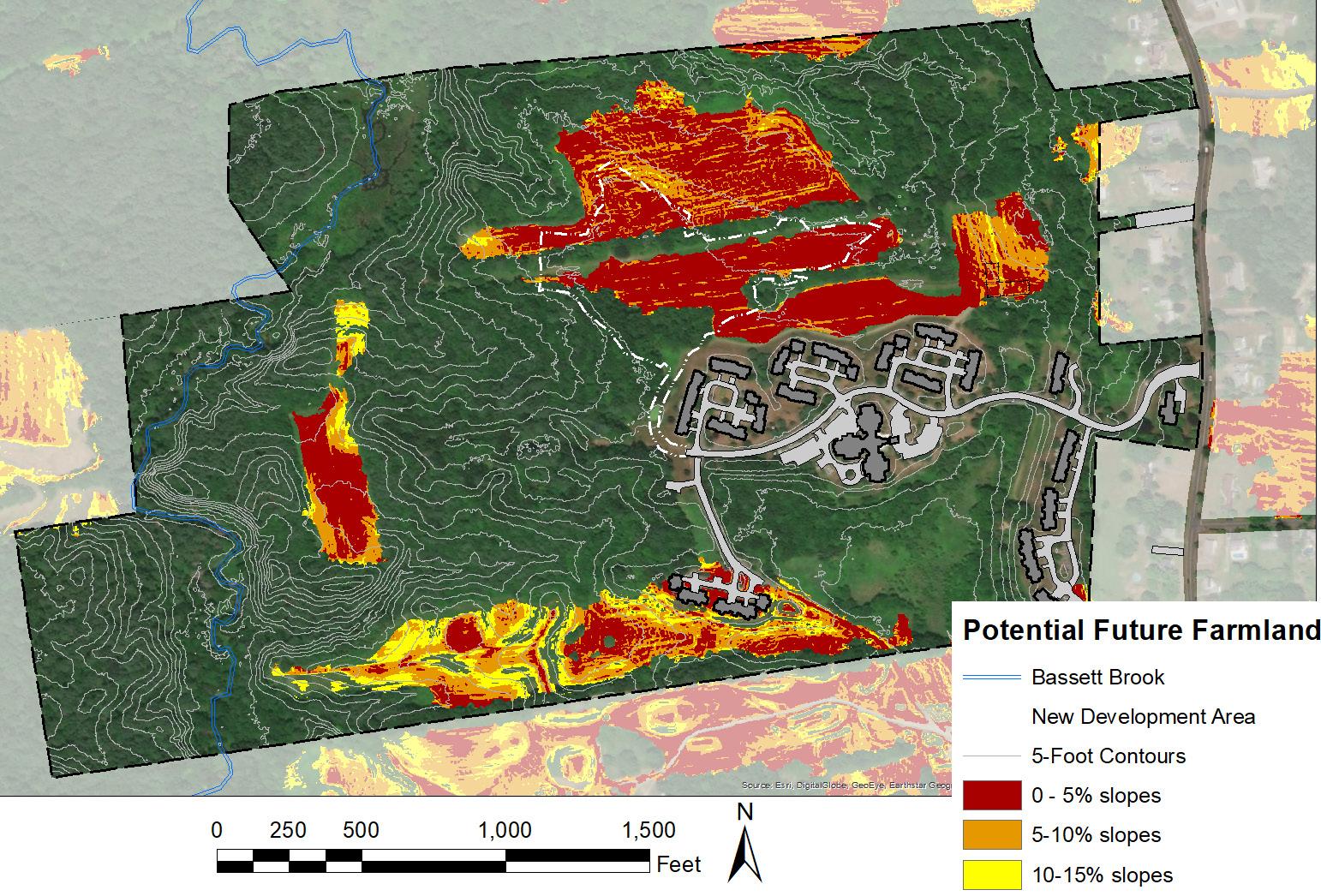
2 minute read
Soils and Geology
Geology and Soils
Surficial Geology
Prime Farmland Soils


North Field Lathrop’s surficial geology is primarily composed of glaciolacustrine fine deposits, the remnants of glacial Lake Hitchcock which once covered the Pioneer Valley. These types of deposits are usually sandy and well draining.
However, the topography of the land and the presence of a clay lens create wet conditions throughout most of Lathrop. Beneath Bassett Brook and the perennial stream along the eastern edge of the property are swamp and marsh deposits, typical of flood plains. Under the developed area are coarse deposits, making it well draining and one of the few buildable areas on the property.
Much of Lathrop’s land is classified by the USDA Natural Resources Conservation Service as either prime farmland or farmland of statewide importance. Cranberry Meadow, Farmers Field, and North Field were in corn or hay production until 2015, managed by a neighboring farmer. These fields are now managed as meadows, and residents have interest in keeping them open to allow farming in the future.
Beneath Bassett Brook, the adjacent floodplain, and some wetlands are poorly draining muck soils. Most uplands on the site have well draining soils; however, some areas, such as the eastern half of North Field, remain wetland, likely due to the presence of a clay lens that retains water closer to the surface.
Potential Future Farmland
North Field
Farmer’s Field Cranberry Meadow Rose Field
Mid-Woods Meadow

Mulberry Meadow
GEOLOGY AND SOILS
Land that is classified as prime farmland soils (or farmland of statewide importance), has a less than 15% slope and is currently open space (meadow, cultivated, or grassland) is shown in the map above in yellow, orange, and red. The dark red indicates the best potential farmland, with 0-5% slopes, allowing for the most diverse array of agricultural practices, including traditional row crops. In orange, land with 5-10% slopes could be farmed on contour and may be more challenging for annual vegetable production. In yellow, land with 10-15% slopes could be used for terraced orchards.
Farmers Field has the largest contiguous area of the land most suitable for farmland at 0-5% slopes, connecting to North Field and Cranberry Meadow, which also contain very good farmland; however, most of this land will be developed for the 36 new townhomes, as outlined in the white dashed border. Cranberry Meadow borders both existing and planned townhomes, making it perhaps too close to residents that may be bothered by the noise and smell, and a lack of privacy. Mid-Woods Meadow has a large stretch of very good farmland, but accessibility and proximity to infrastructure are concerns. Rose Field appears to be the best location for farming, because of its accessibility, existing water connection, mild slopes, and prime farmland soils. A portion of this field is already used for the community garden.










